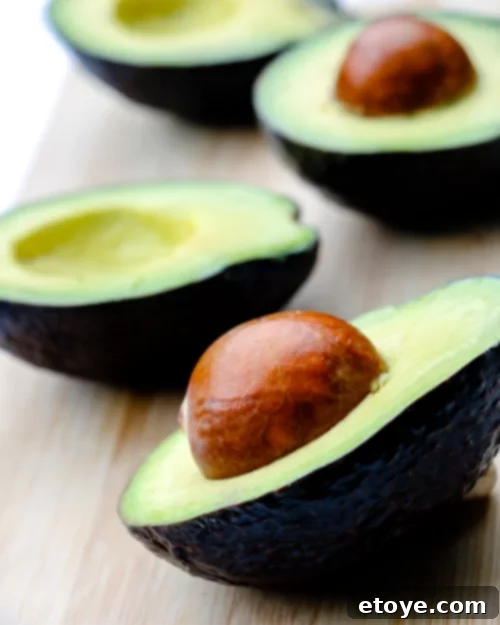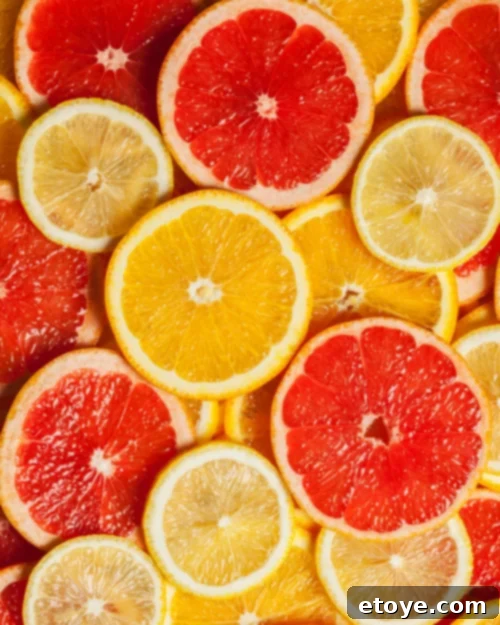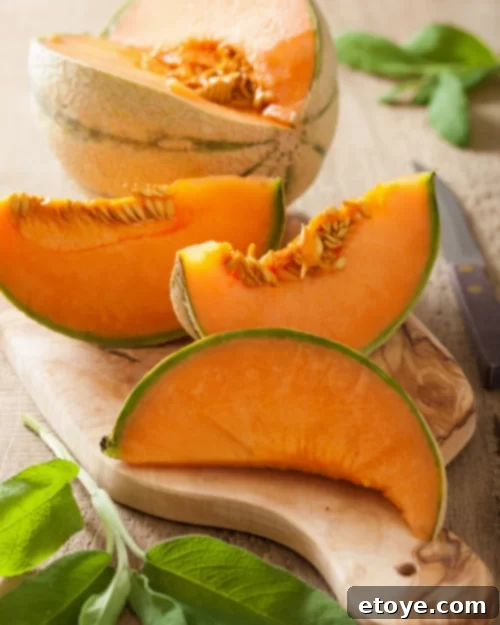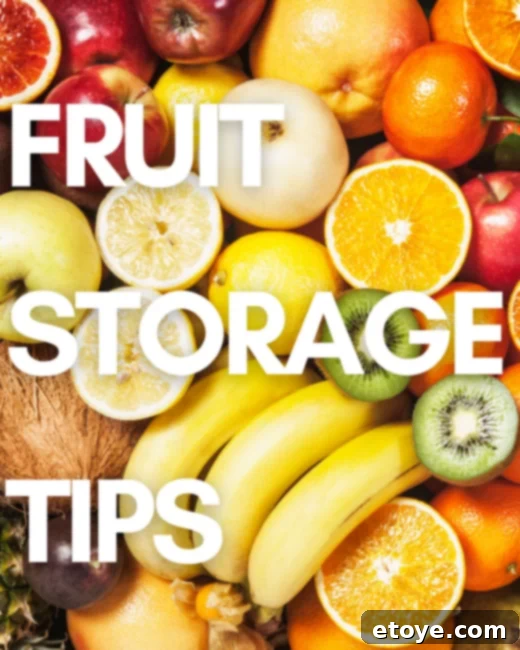Food waste is a pervasive and often overlooked issue with significant environmental and economic implications. A considerable portion of this waste stems from improper storage of fresh produce, particularly fruits. Many consumers find themselves uncertain about the best ways to store their fruits, which frequently leads to premature ripening, spoilage, and ultimately, wasted food. This not only drains household budgets but also contributes to the staggering global problem of food loss.
The adage “clean fridge, clean mind” holds true when it comes to managing your produce. An organized refrigerator allows you to easily see what you have, make more informed grocery purchasing decisions, utilize existing ingredients before they expire, and ultimately save money. While the ultimate strategy for enjoying fresh fruit is to consume it as soon as possible, understanding optimal storage techniques can significantly extend its freshness and flavor. This comprehensive guide will equip you with the knowledge to store your fruits like a pro, minimize waste, and savor every delicious bite.

Understanding Ethylene Gas: The Ripening Regulator
Ethylene gas is a naturally occurring, odorless, and harmless plant hormone that plays a crucial role in the ripening process of many fruits and vegetables. While it’s vital for natural development, uncontrolled exposure to ethylene can dramatically accelerate ripening, leading to premature spoilage if produce isn’t consumed quickly enough. Understanding which fruits produce this gas and which are sensitive to it is fundamental to effective food storage.
Unlike most vegetables, many fruits are significant producers of ethylene gas. High-ethylene producers include common favorites such as apples, apricots, bananas, avocados, cantaloupes, kiwi, mangoes, nectarines, peaches, pears, and plums. Conversely, certain fruits and vegetables are highly sensitive to ethylene gas. These include most vegetables (like leafy greens, broccoli, carrots), as well as fruits such as berries, citrus fruits, grapes, and watermelons. Exposure to ethylene from neighboring produce can cause these sensitive items to ripen and spoil much faster than they otherwise would. For a more detailed list of ethylene-producing and ethylene-sensitive produce, consult resources like this article from One Green Planet, a valuable resource for sustainable living and food insights.
The key takeaway for optimal storage is segregation. To preserve the freshness of your ethylene-sensitive vegetables and fruits, always store them separately from high-ethylene-producing fruits. This simple practice can significantly slow down the ripening process, buying you more time to enjoy your produce at its peak freshness and drastically reducing food waste in your kitchen.
Strategic Fruit Consumption: Timing Is Everything
Adopting a structured approach to consuming your fruits can dramatically improve freshness and reduce waste. Just as with vegetables, organizing your fridge and pantry according to anticipated usage helps you stay on top of your inventory and avoid over-purchasing. This general guideline helps categorize fruits based on their typical shelf life and how quickly they should be consumed or processed:
- ASAP Fruits: Use Within 2-5 Days Max – These are highly perishable fruits that ripen quickly and should be eaten almost immediately after reaching peak ripeness. Examples include berries, bananas (once ripe), ripe avocados, and ripe stone fruits.
- Soonish Fruits: Use Within One Week – Fruits that have a slightly longer shelf life but still benefit from prompt consumption. Pears and certain citrus fruits fall into this category.
- Sweet Time Fruits: 2+ Weeks or Longer – These fruits are more robust and can be stored for extended periods, especially when kept under optimal conditions. Apples, unripe melons, and many citrus varieties are good examples.
By categorizing your fruits this way, you can prioritize what needs to be eaten first, plan your meals accordingly, and prevent delicious produce from going to waste. Remember, consistent fridge organization is your secret weapon against forgotten and spoiled fruit.

Optimal Storage for Avocados and Tomatoes
Though often treated as vegetables in culinary contexts, both avocados and tomatoes are botanically classified as fruits. Their distinct ripening and storage needs make them unique cases in the produce aisle.
Tomatoes: These juicy gems, especially heirloom varieties, are a true summer delight. Their flavor and texture are highly dependent on proper storage. Tomatoes, falling under our “ASAP” category once ripe, should always be stored at room temperature, away from direct sunlight, until they reach peak ripeness. Refrigerating unripe tomatoes can cause them to become mealy and lose their vibrant flavor. Once ripe, they will be good for up to 3 days at room temperature. If you need to extend their life for a day or two beyond that, you can place them in the refrigerator, but be aware that their texture might slightly change. For the best taste, always bring refrigerated tomatoes back to room temperature before serving.
Avocados: Often dubbed the “most demanding fruit” due to their rapid transition from rock-hard to overly soft, avocados require careful attention. Unripe avocados can remain firm for a full week, sometimes even two if freshly picked. Allow them to ripen on your kitchen counter at room temperature. To prevent them from spoiling too quickly once ripe, move them to the refrigerator just before they reach full softness. This can extend their usability by several days. If you need to accelerate ripening, place them in a paper bag with an apple or banana (high ethylene producers) out of direct sunlight and check daily. Once ripe, enjoy them in salads, guacamole, or our favorite Shrimp and Avocado Buddha Bowl recipe.

Mastering Berry Storage for Maximum Freshness
Berries, delightful and nutrient-packed, belong firmly in the “ASAP” category due to their delicate nature and susceptibility to mold. Wasting these naturally sweet bites would truly be a shame, considering their endless nutritional benefits. Proper storage is crucial to extending their brief but brilliant shelf life. Before diving into specific tips, remember to check out our post all about how to use extra berries before they turn, ensuring none ever go to waste!
Berries: The key to fresh berries lies in moisture control and early detection of spoilage. Upon bringing berries home, inspect them carefully and immediately remove any moldy, soft, or damaged ones. A single spoiled berry can quickly contaminate the entire batch. Store berries unwashed in an airtight container lined with a paper towel at the bottom. The paper towel will absorb any excess moisture, which is the primary catalyst for mold growth. Place this container in the coldest part of your refrigerator.
Raspberries and strawberries are particularly delicate and often have the shortest shelf life, ideally consumed within 2 days of purchase. It is crucial to avoid washing your berries until just before you are ready to eat them. Washing too soon introduces moisture that encourages mold and accelerates spoilage. If you notice your berries are nearing their end but you can’t consume them fresh, don’t despair! Berries are excellent for freezing. Simply spread them in a single layer on a baking sheet to freeze individually, then transfer them to a freezer-safe bag. Frozen berries are perfect for smoothies, homemade ‘nice cream,’ or making delicious jams and compotes, ensuring their goodness is never wasted.

The Art of Storing Stone Fruit: Peaches, Plums, Nectarines, and Pluots
Stone fruits—including peaches, nectarines, plums, pluots, and apricots—are quintessential seasonal delights, celebrated for their juicy sweetness during warm weather months. These fruits, once ripe, fall into our “ASAP” category, as their peak window of perfection is fleeting. There’s nothing quite like biting into a perfectly ripe, succulent piece of stone fruit, its juices running down your chin. However, encountering a mealy, grainy fruit can be a significant disappointment. Understanding how to avoid this common pitfall is key to enjoying stone fruit at its best.
The primary trick to preserving the desirable texture of stone fruit is preventing chilling injury. Exposing unripe stone fruit to cold temperatures can disrupt its natural ripening process, leading to a mealy, unpleasant, and often grainy texture once it does ripen. Therefore, if you bring home unripe stone fruit from the grocery store or farmer’s market, store them on your kitchen counter at room temperature, away from direct sunlight. They typically ripen within 2-3 days, depending on their initial state. You’ll know stone fruit is fully ripe by its sweet, fragrant smell and a slight give when gently pressed. The skin should feel soft but firm. Once they reach this ideal stage, they are best eaten immediately. If you can’t consume them all right away, transfer the ripe fruits to the refrigerator to extend their shelf life by a few days. Only put them in the fridge once they are fully ripe.
To speed up the ripening of firm stone fruit, place them in a paper bag, which traps the natural ethylene gas they emit, accelerating the process. Check them daily. If you find your stone fruit has become a little too ripe for eating fresh, or if it unexpectedly develops a mealy texture, don’t let it go to waste! Slice them up and pop them into a freezer-safe bag. They’ll be perfect for making delicious jams, smoothies, or even a delightful Roasted Peach and Goat Cheese Tart recipe.

The Zesty Truth About Storing Citrus: Oranges, Limes, and Lemons
Citrus fruits, with their vibrant colors and tangy flavors, are culinary powerhouses, bringing life to both sweet and savory dishes. Beyond their refreshing taste, they are packed with essential vitamins and antioxidants, making those sweet, tangy bites incredibly nutritious. While most citrus would generally fall into our “sweet time” category due to their robust nature, there are unique aspects of their storage you should know to maximize their freshness and utility.
One of the most fascinating facts about citrus is that, unlike many other fruits, they actually ripen on the tree. This means that once they are picked, their sweetness and flavor won’t significantly increase. What you buy is essentially what you get in terms of taste. This characteristic simplifies their storage considerably. For short-term use, citrus fruits can be stored at room temperature for up to four days. A fruit bowl on your counter not only looks inviting but also keeps them readily accessible. However, if you don’t anticipate using them within this timeframe, it’s best to move them to the crisper drawer of your refrigerator. Stored in the fridge, citrus fruits can last anywhere from two to four weeks, maintaining their juiciness and flavor much longer.
While I generally don’t recommend freezing whole citrus fruits due to changes in texture upon thawing, preserving their juice is an excellent strategy. Squeezing the juice into ice cube trays or small jars allows you to have fresh citrus on hand at all times for cooking, baking, or beverages. This method prevents waste and ensures you always have that bright, acidic kick whenever inspiration strikes. For tips on maximizing every drop, check out our post all about how to get more juice from your lemons!

Storing Apples, Pears, and Bananas: A Trio of Diverse Needs
This trio of popular fruits—apples, pears, and bananas—each presents its own unique storage requirements. Apples typically enjoy a “sweet time” in storage, pears fall into the “soonish” category, and bananas are somewhat of a puzzle, often demanding “ASAP” attention once ripe.
Apples: You know the drill by now: if you bring your apples home in a suffocating plastic bag, ditch it immediately! Apples thrive with good air circulation. For optimal freshness, store apples loosely in your refrigerator’s crisper drawer. If you wash them before storing, ensure they are completely dry to prevent mold growth. Stored correctly, apples can last a good three weeks, sometimes even longer, in the fridge. Apples produce ethylene gas, so keep them separate from ethylene-sensitive produce. If you find yourself with an abundance of apples from apple picking or an ambitious grocery run, consider transforming them into a delightful treat like this Maple Glazed Whipped Feta and Apple Tart recipe.
Pears: Pears are unique in their ripening process, as most varieties are picked unripe and require specific conditions to reach their sweet, juicy potential. Did you know there are both winter and summer pears? Both varieties typically need a period of cold storage (called ‘curing’) before they are set out on the counter to ripen. Summer pears, like Bartlett, will store in the fridge for about two weeks before needing to be ripened at room temperature. Winter pears, such as Bosc or Anjou, are more robust and can be stored in the refrigerator for up to four weeks before being moved to the counter. Always check for ripeness by gently pressing near the stem; it should yield slightly. If you can’t eat them before they ripen, pears are excellent for canning, making jams, drying, or baking into a decadent dessert like this Upside Down Pear Caramel Chocolate Cake recipe.
Bananas: Bananas truly march to the beat of their own drum, much like avocados, with no single hard-and-fast rule for storage. They are best stored on your countertop at room temperature and eaten as soon as they reach your preferred stage of ripeness. Bananas progress rapidly from green to yellow to brown, and each stage offers a unique flavor and texture profile. I personally favor a yellow banana that has just turned, as it offers a perfect balance of sweetness without being overly soft. To slow down ripening, you can separate bananas from the bunch or wrap the stems tightly with plastic wrap. You can freeze bananas at any stage of ripeness—peel them first for convenience—and use them for ‘nice cream,’ smoothies, coating in chocolate, or saving for banana bread. Overly brown bananas are especially perfect for baking, lending incredible moisture and sweetness to recipes such as this Blueberry Banana Buckle Coffee Cake or a rich Double Chocolate Banana Bread recipe.

Melons: Sweet Strategies for Storage
All melons—from watermelons to cantaloupes and honeydews—rightly fall under our “sweet time” category, a fitting description for their wonderfully sugary flesh. Proper storage ensures you can enjoy these refreshing fruits for as long as possible, whether they are fresh from the garden or just purchased from the market.
If you bring home already ripe melons, it’s best to store them in your refrigerator. Whole melons can be placed in the crisper drawer if they fit, or simply on a shelf. The cool temperature will slow down further ripening and extend their freshness. Once cut, melons should always be covered. Wrap the exposed flesh tightly with plastic wrap or place the pieces in an airtight container to prevent dehydration and absorption of refrigerator odors. Cut melons will typically last for about 3-5 days in the fridge.
For melons that need to ripen, such as those bought firm from the store, store them at room temperature in a cool, dry place, away from direct sunlight. Honeydew and cantaloupe can take up to 10 days to ripen fully, while larger watermelons might take up to three weeks. An important consideration for melons is their interaction with ethylene gas. Watermelons and honeydews are highly sensitive to ethylene gas, which means they should be stored separately from high-ethylene-producing fruits like apples, bananas, and even cantaloupes. Interestingly, cantaloupes themselves produce a significant amount of ethylene gas, so they should be kept away from other melons, especially watermelons and honeydews, to prevent premature spoilage. By understanding these ethylene dynamics, you can strategically store your melons to ensure each one reaches its peak sweetness and lasts longer, providing refreshing enjoyment for weeks.
By implementing these fruit storage strategies, you’re not just preserving produce; you’re making a conscious choice to reduce food waste, save money, and enjoy the freshest, most flavorful fruits possible. A well-organized kitchen and a mindful approach to food storage are key ingredients for a sustainable and delicious lifestyle.
